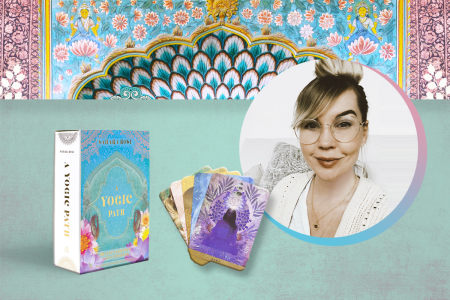
Danielle Noel Q&A: A Yogic Path
Embark on a journey of awakening and self-discovery
We had a fun chat with the illustrator of our beautiful Yogic Path Oracle Deck and Guidebook, Danielle Noel about her inspiration, what’s it like to work with Sahara Rose, her ritual before designing and so much more!
Do you have any famous artists or illustrators that you look to for inspiration?
I am very much inspired by painting and analogue film. I also have a great love for the Surrealists, with Frida Kahlo being at the forefront of this list. Within this genre, I also adore Leonora Carrington and Remedios Varo, two other very inspiring female Surrealist painters, as well as Hilma af Klint. I often look to all of them for inspiration, as they used detailed representations to create abstract, ethereal imagery, which I think encourages conscious exploration for their viewers. I also try to create visual portals and exploratory concepts for my viewers, as I think art should be activating and mind-bending.
What is the different symbology between yogic decks and tarot cards?
Tarot decks contain specific keys and descriptions that are embedded with the ancient language of the Tarot. Within each deck of 78 cards, you will usually find 22 Major Arcana cards that connect to larger, over-arching themes in our lives, and also the Minor Arcana, which are 56 suit cards that tap into the minutiae. The Minor Arcana are comprised of four suits with 14 cards each. With all of these cards blended together, the Tarot can seem quite complex—however, it does not need to be intimidating at all. It can be a very practical, lovely tool to help us awaken our own wisdom. There are loads of different Tarot decks out there with varying themes, but their keys are always similar.
A Yogic Path Oracle, on the other hand, is a creative set of cards that Sahara Rose has personally built, based on her own background knowledge and intuitive wisdom. The themes Sahara includes in this deck are also very ancient, and she has blended together specifics that go hand in hand with Vedic and yogic teachings. Yogic decks fall within the "Oracle Deck" category, which are cards that can have any particular theme; the Tarot, by contrast, is more traditional. All of the decks we now see in the world, however, are wonderful tools to help us tap into our own awakening and self-discovery. So they all do have that in common.

Where do you look for inspiration when creating new illustrations?
I am inspired by ancient teachings, mythology, and the stories of old. I recently visited Egypt and spent some time exploring the temples there, which was a huge bucket-list accomplishment for me. I also get inspiration from the Earth and the sacred landscapes that exist around us, as well as the great mysteries of the Universe and Cosmos.
Do you have a favorite card from the Yogic Path deck?
Oh, that's a tough one! I am very much in love with the Dharana card, which is a theme that I try to work on within myself. This card encourages single-focused concentration, and the transformation and magic that happens when we commit to our dreams. It has taught me to deepen my understanding of my goals from the core of my spirit. And I think the artwork for that specific card also really encapsulates this energy. It was a pleasure to create!
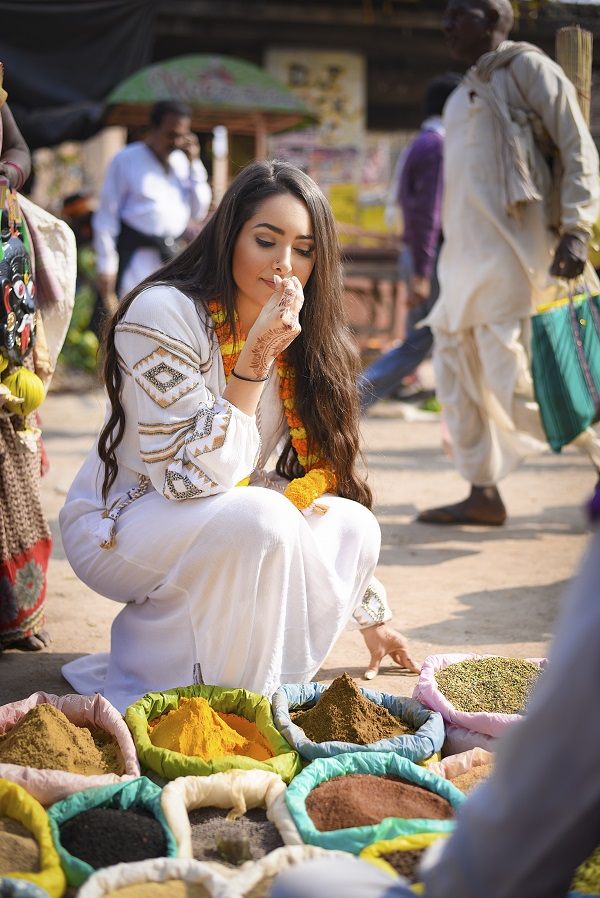
What is it like working with Sahara Rose?
Sahara is such an angel with a wonderful wealth of knowledge. She was so supportive of me throughout the entire process of creating, and we had a brilliant time chatting about the concepts and visuals together. It was a fun and easy experience working with her, as I think we both just meshed really well and were so excited to create something truly meaningful and magical together. She is a special person, and I feel very blessed to have worked with her.
How important are the colors in your designs for a deck like this?
Color is everything to me when I'm creating. I am also obsessed with aesthetics and textures, whether I'm connecting to a specific time period or energy, so with this deck, there was so much to work with. I also wanted to represent an ancient, mystical feeling, so using vibrant yet slightly muted palettes and antiqued textures was very important. I love the bright visuals of this deck, as I typically work in more neutral, pastel tones, so these cards pushed me to explore new territory.
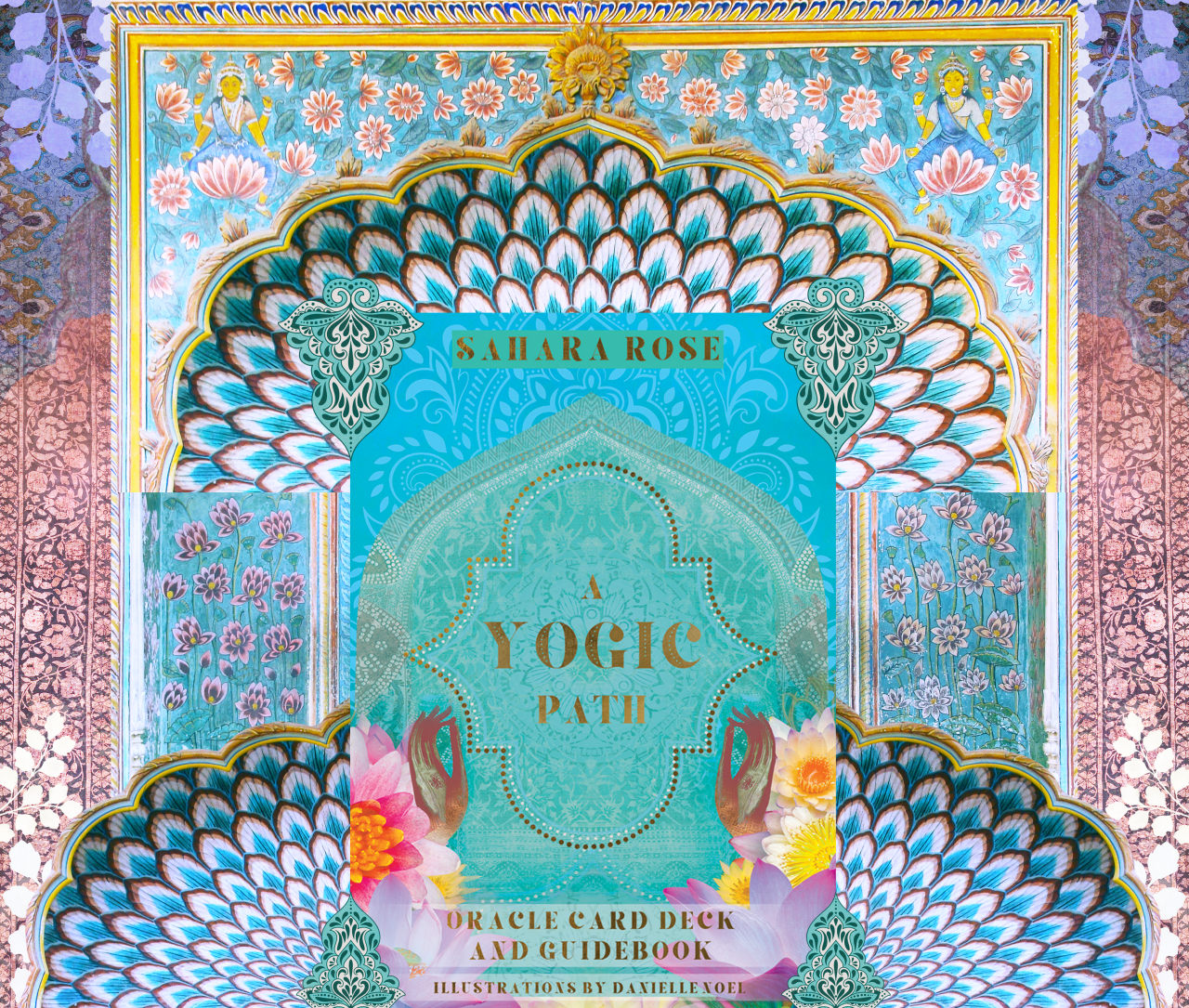
Your work has many layers of meaning and symbology—how did you learn about these things?
I am a bit of an avid reader and researcher. When it comes to incorporating ancient themes and teachings within visuals, I think there are a lot of layers that exist within history as well as stories, so there are ways of conjuring all of the elements through subtle visuals and clues. It also becomes an intuitive process when I'm creating, sort of like piecing together the bones of an old structure or lost world. The layers are all a part of the discovery and exploration. It is my hope that viewers will be able to unearth their own ideas and seeded memories when they look deep into the imagery.
How did you become an oracle designer?
I have been designing since my teen years and just sort of fell into the practice of working within these magical, oracle themes somewhere along the way. I've also been reading Oracles and the Tarot since then, and with my background in design, the two became one. I began by creating layered photographic collages while I was in art school, along with "Tarot Portraits" of friends. I then designed my first Tarot deck, "The Starchild Tarot," from some of the initial illustrations, which then became a new-found career path! That Tarot was the first step towards the ultimate goal of creating many other decks. I love creating Oracles because it gives me the freedom to express a lot of the passions I have, in visual form, and it allows my readers to interact with the imagery, which I think is the whole purpose of art. It encourages us to form our own opinions, reactions, and potentially, profound experiences.
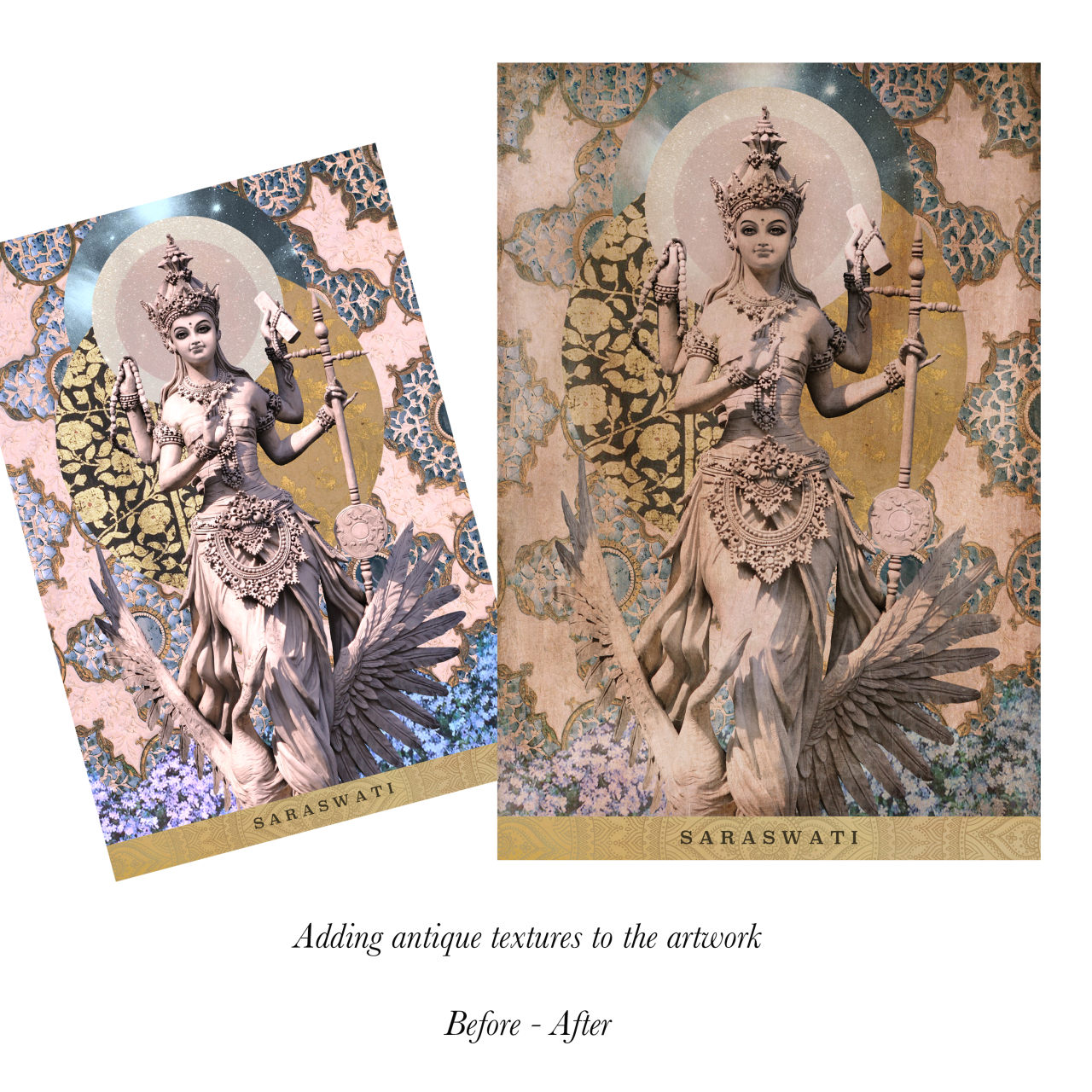
Is there a ritual or anything special you do before you start designing?
I actually do have a little ritual I incorporate before I go into my design work. I like to cleanse my space, light a candle, and put on some of my favorite tunes. Sometimes my work will require a bit of energy, so I may listen to more upbeat sounds, while in other moments I will tap into quiet, ambient music. There are also a lot of pauses in between my actions where I meditate on the visuals as I go, so it becomes an intuitive process when I'm designing.
How do you decide which images to incorporate when you’re designing a deck?
This is something I think about a lot when I'm creating. Whether it's for someone else, an illustration job, or one of my own personal projects, I try to tap into the larger theme of the project first, then the aesthetic—the colors, shapes, and tones. The imagery can also be very specific to the style of the deck. Is it more symbolic? Abstract? Conceptual? What is the language that is woven into this deck, and how will people be reading it, visually? The images I then choose and form will typically align with all of these criteria. And at the base of it all is my own style and love, which I think is something I've cultivated strongly.
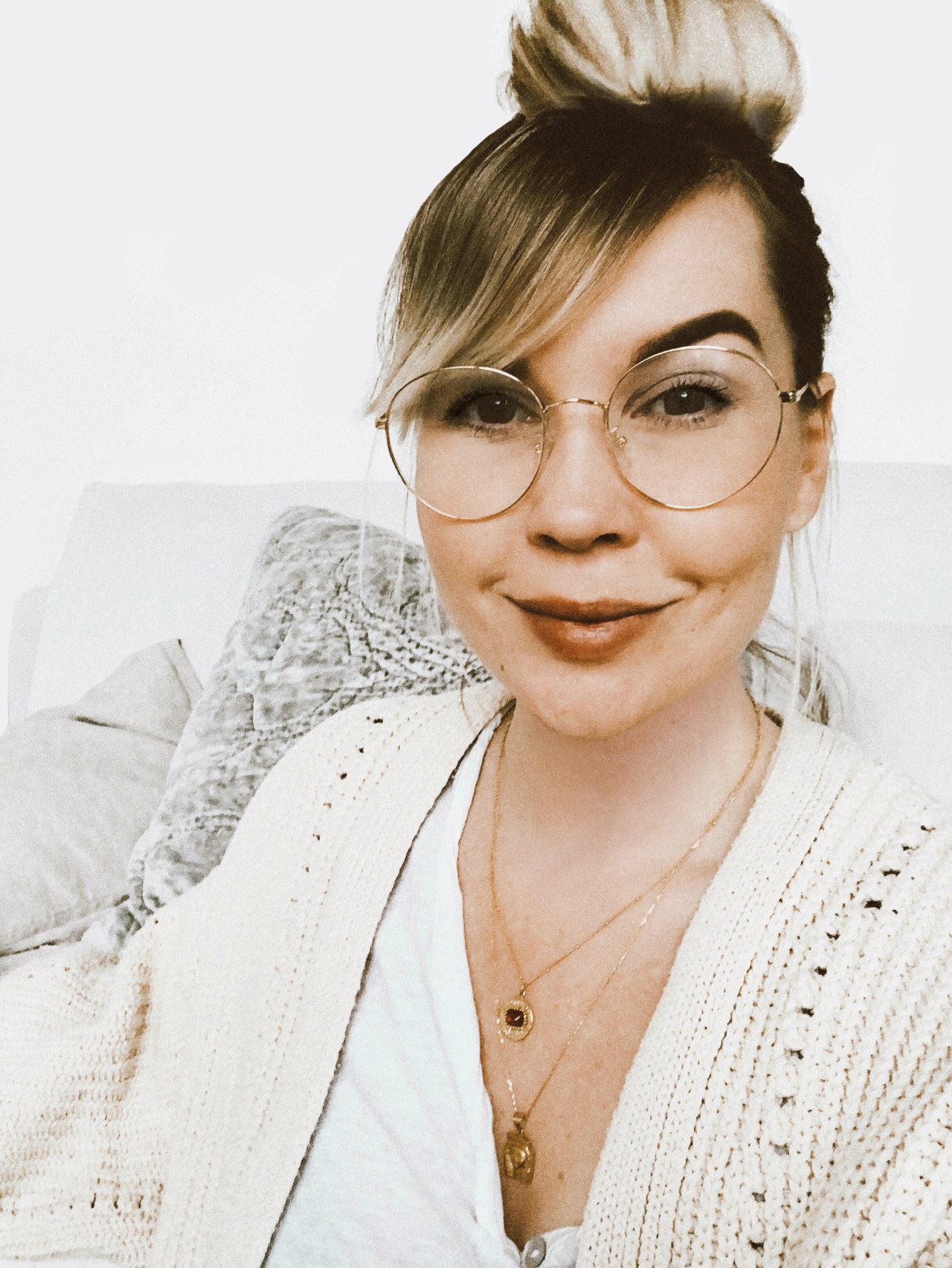
About Danielle Noel
Danielle Noel is a visual artist and oracle designer who weaves ancient mysticism and energy medicine into new wellness tools. She is the creator of The Starchild Tarot, The Moonchild Tarot, and the author of The book of Tarot: A Guide for Modern Mystics.

